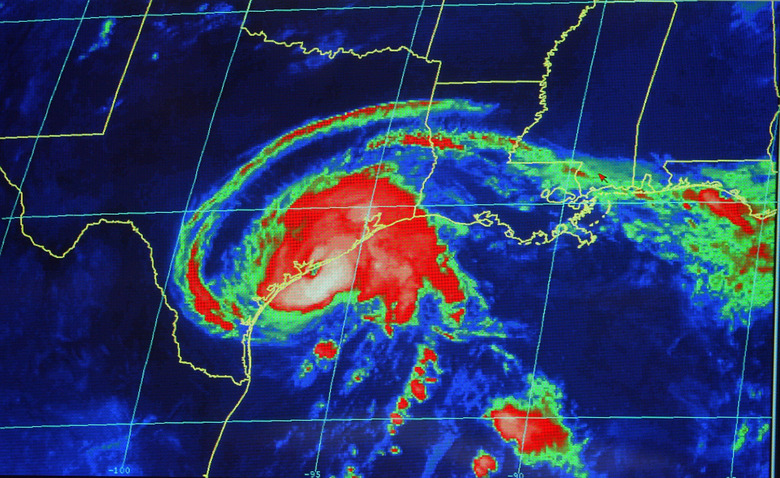Tools Used In Meteorology
Before the 1600s, knowledge of the Earth's atmosphere and weather was not exact. People mostly relied on experience with local weather events for forecasts. Aunt Sally could smell a snowstorm coming, and Uncle Jim's knee told of impending rain. Then simple devices, such as thermometers, barometers and weather vanes, were invented that gave recordable data. As technology advanced from the 1800s onward, more sophisticated equipment allowed detection of regional and global weather patterns, and modern radar, satellites and computer modeling programs allow long-term weather predictions.
Temperature Equipment
Temperature Equipment
Glass thermometers filled with either alcohol or mercury are standard equipment for measuring air, soil and water temperatures. Maximum and minimum temperature thermometers register the lowest and highest temperatures during a specific time period. The resistance temperature detector determines air temperatures based on changes in electrical resistance of specific metals due to temperature and gives a digital readout. Preferred for automatic weather stations, RTDs can supply a temperature reading every second.
Atmospheric Pressure and Wind
Atmospheric Pressure and Wind
Barometers measure atmospheric pressure. Liquid barometers usually measure mercury contained within an evacuated tube, and the mercury level changes as atmospheric pressure increases or decreases. Aneroid barometers contain a fixed volume of air sealed within a unit equipped with a flexible membrane. As the membrane expands and contracts with changes caused by atmospheric pressure conditions, an attached needle points to the correct reading. Wind anemometers measure the direction and speed of wind. They usually incorporate a weather vane tail and a fan to measure speed.
Moisture Indicators
Moisture Indicators
There are several tools that measure humidity, or the percentage of water in air. The earliest was the hygrometer, which depends on a human hair expanding and contracting in response to humidity changes. The psychrometer detects the difference in temperature between a dry and a wet thermometer bulb to measure humidity. Other instruments include the electrical hygrometer, the dew-point hygrometer, the infrared hygrometer and the dew cell. Rain gauges measure rainfall, and snow gauges measure snowfall.
Weather Balloons
Weather Balloons
Weather balloons measure humidity, air pressure, temperature, wind speed and direction with units called radiosondes. Launched from 1,100 sites around the world twice a day, they rise to over 20 miles above the Earth, recording as they travel and transmitting the information back to meteorologists by radio waves. When the balloon bursts, the radiosonde parachutes back to Earth for recycling. Weather balloons give a vertical snapshot of atmospheric conditions in a given area.
High-Tech Tools
High-Tech Tools
With the invention of radar in World War II, meteorological studies vastly improved. Conventional radar, Doppler radar and dual-polarization radar detect storm systems, their direction, speed, intensity and type of precipitation. Meteorological satellites orbiting the Earth began transmitting in 1962 and led to more complicated satellites. Geostationary Operational Environmental Satellites transmit photographic images of the Western Hemisphere every 15 minutes. Polar Operational Environmental Satellites take about 1.5 hours to orbit the Earth, providing information about weather, oceans and volcanic eruptions. Computer analysis of weather data and computer modeling of weather systems make long-term weather prediction on a global scale increasingly more accurate.
Cite This Article
MLA
Csanyi, Carolyn. "Tools Used In Meteorology" sciencing.com, https://www.sciencing.com/tools-used-meteorology-22362/. 24 April 2017.
APA
Csanyi, Carolyn. (2017, April 24). Tools Used In Meteorology. sciencing.com. Retrieved from https://www.sciencing.com/tools-used-meteorology-22362/
Chicago
Csanyi, Carolyn. Tools Used In Meteorology last modified August 30, 2022. https://www.sciencing.com/tools-used-meteorology-22362/
